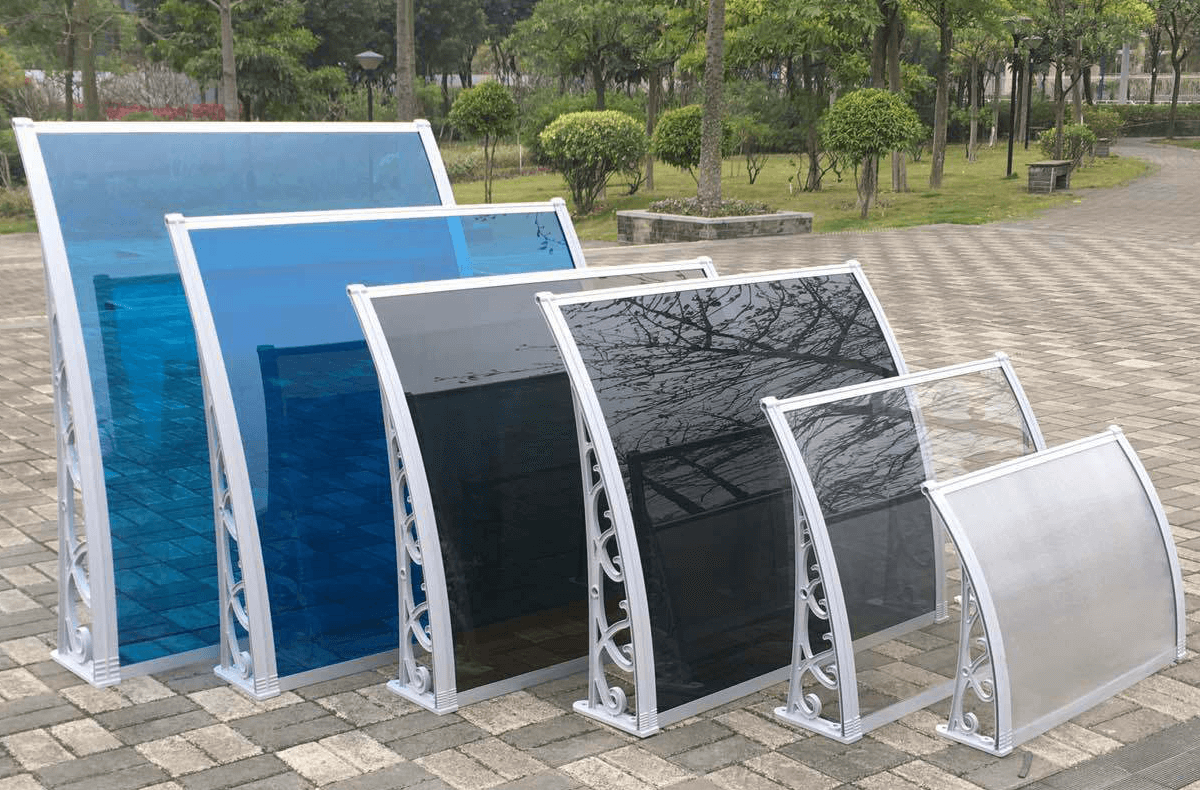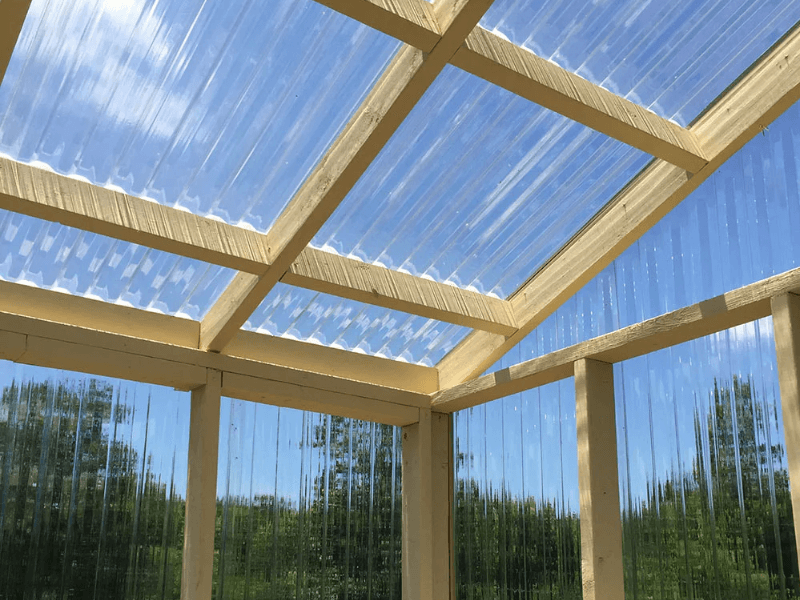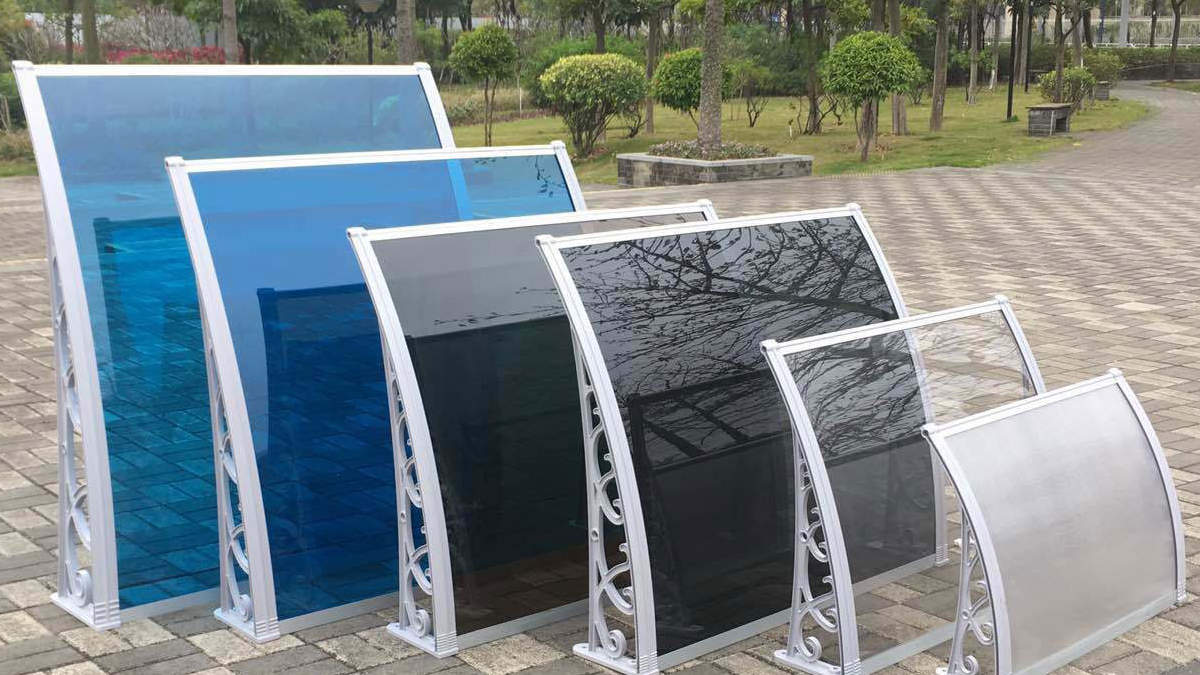
In the quest for materials that offer the perfect balance between clarity and resilience, glass is the top contender. Picture the shimmering skyline of architectural wonders and the lush sanctuaries of glasshouses. However, in recent years, polycarbonate sheets have started to replace glass in many different uses.
So, how does this relatively new material fare compared to glass? Whether you’re an architect seeking the perfect balance of light and structure, a horticulturist nurturing life under a glass canopy, or simply curious about the building blocks of our world, this guide will broaden your horizons about polycarbonate sheets.
What’s Polycarbonate Made Of?
Whether working on a DIY venture, a home improvement task, or a creative masterpiece, a durable polycarbonate sheet is your trusty sidekick. These sheets are made from high-tech plastic that’s not just your run-of-the-mill plastic bottle material. They’re strong, they’re clear, and they let the light shine through while still holding up like a champ against the elements.
This material is created from a chemical concoction that involves two main ingredients: bisphenol A (BPA) and phosgene. BPA is the building block, sort of like the flour in a baking recipe. This is a chemical compound that comes from petroleum or natural gas. It links up with other BPA molecules in a chain, forming what’s called a polymer. Think of these polymers as a chain of beads that hold hands.
Now, here’s where things get a bit sciencey. Phosgene, on the other hand, isn’t as fun as it sounds. It’s a reactive and somewhat dangerous gas. But don’t worry, manufacturers use it under controlled conditions to work its magic in creating polycarbonate panels. The BPA molecules and phosgene get together in a reaction that creates the polycarbonate polymer. The resulting polymer then cools down and gets shaped into forms.
The cool thing about this material is that the polymer chain structure gives it some awesome properties. It’s strong, impact-resistant, and transparent, making it super useful for all sorts of things, from eyeglass lenses to aeroplane windows to construction materials.
What Are the Advantages of Polycarbonate Panels?
This material offers a variety of benefits and serves different purposes, so buckle up:
- Super strength: First off, these panels are tough cookies. They’re incredibly strong and can take quite a beating without breaking a sweat. You won’t have to worry about them cracking or shattering easily. They bring durability and versatility to your construction game, making your projects functional and aesthetically pleasing;
- Crystal clear: Ever seen those glass-like panels that let light in beautifully? A clear polycarbonate sheet allows sunlight to pour through without distorting the view. You have the best of both worlds – the strength of high-tech plastic with the elegance of glass;
- Light as a feather: Despite their strength, these materials are surprisingly lightweight, so you can easily handle, install, and work with them, even for DIY projects;
- Weather warrior: Mother Nature’s moods don’t faze a strong polycarbonate sheet. They stand up to the elements like a champ – from rain to snow to scorching sun. UV-resistant coatings make sure they won’t fade or turn yellow over time, so they’re ready for the long haul;
- Versatile vibes: If you’re looking to buy polycarbonate sheets, you can find them in various sizes, thicknesses, and even colours. Whether you’re covering a greenhouse, building a skylight, or crafting something unique, they can adapt to your needs;
- Easy breezy maintenance: A quick wipe-down with mild soap and water, and they’re good as new. No need for fancy cleaners or elaborate maintenance routines. Take your greenhouse gardening game a step further and get yourself a few self-watering planters. Your greenhouse becomes a haven where plants flourish, and you get to enjoy the beauty without feeling like you’re always on plant duty;
- Energy Efficiency: The clarity of polycarbonate panels lets natural light flood in, reducing the need for artificial lighting during the day. This can save you some bucks on your energy bill and give your space a more eco-friendly vibe;
- Sound Insulation: These panels can help dampen sound, making them a great choice for spaces where you want a more peaceful environment.
How Long Will Polycarbonate Last?
These panels can handle the punches that Mother Nature throws at them, from rain and snow to strong sun rays. And they don’t just survive, they thrive. You won’t see them cracking, fading, or turning brittle as some other materials might.
They’re like built-in shields that ward off the wear and tear of daily life. Plus, they often come with UV-resistant coatings, which means they won’t lose their clarity or strength due to sunlight exposure. If you take care of your polycarbonate panels – keep them clean and avoid harsh chemicals – they’ll likely be around for a good long while. We’re talking 20, 30, even 40 years or more.
Compared to Glass
When it comes to sheer elegance and clarity, glass takes the cake. There’s something about those crystal-clear windows and sleek surfaces that’s hard to beat. Now, glass can last a good long while, no doubt about it. But here’s where polycarbonate throws a curveball – it can last just as long, even longer! These panels are built to withstand UV rays and the test of time. They won’t fade, crack, or turn yellow like some types of glass might.
Alright, now for the grand finale – safety. Glass can be fragile, and broken glass isn’t exactly the safest thing around. Polycarbonate panels, on the other hand, are like the Bruce Lees of building materials. They won’t shatter into dangerous shards, making them a safer option, especially in areas where accidents happen.
Steven Bennett
Related posts
Stay connected
Today's pick
- Things to Remember While Designing Your Custom Modular Kitchen in GurgaonGurgaon now known as Gurugram is the second largest city in the state of Haryana and is a reflectiossn of an ideal modern city with futuristic goals. Witnessing rapid urbanization, it has also emerged as a hub for contemporary homes, with homeowners seeking innovative and... The post Things to Remember While Designing Your Custom Modular […]

